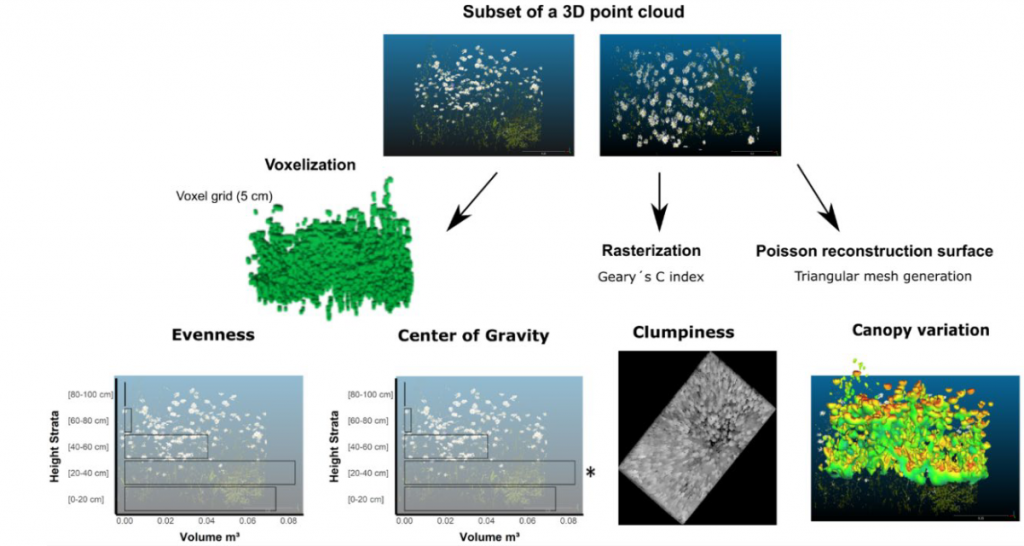New publication from Guimarães-Steinicke et al. in Remote Sensing: Diversity Effects on Canopy Structure Change throughout a Growing Season in Experimental Grassland Communities
Increasing plant diversity commonly enhances standing biomass and other ecosystem functions (i.e., carbon fluxes, water use efficiency, herbivory). The standing biomass is correlated with vegetation volume, which describes plant biomass allocation within a complex canopy structure. As the canopy structure of plant communities is not static throughout time, it is expected that its changes also control diversity effects on ecosystem functioning. Yet, most studies are based on one or two measures of ecosystem function per year. Here, we examine the temporal effects of diversity of grassland communities on canopy structural components in high temporal (bi-weekly throughout the growing season) and spatial resolutions as a proxy for ecosystem functioning. Using terrestrial laser scanning, we estimate metrics of vertical structure, such as biomass distribution (evenness) and highest biomass allocation (center of gravity) along height strata. For horizontal metrics, we calculated community stand gaps and canopy surface variation.

Our findings show that species-rich communities start filling the vertical space (evenness) earlier in the growing season, suggesting a more extended period of resource use (i.e., light-harvesting). Moreover, more diverse communities raised their center of gravity only at the peak of biomass in spring, likely triggered by higher interspecific competition inducing higher biomass allocation at upper layers of the canopy. Furthermore, richer communities were clumpier only after mowing, revealing species-specific differences in regrowth. Lastly, species richness strongly affected canopy variation when the phenology status and height differences were maximal, suggesting differences in plant functional strategies (space to grow, resource use, and flowering phenology). Therefore, the effects of diversity on ecosystem functions depending on those structural components such as biomass production, decomposition, and herbivory, may also change throughout the season due to various mechanisms, such as niche differences, increased complementarity, and temporal and spatial variation in biological activity.
Reference:
Guimarães-Steinicke C, Weigelt A, Ebeling A, Eisenhauer N, Wirth C. Diversity Effects on Canopy Structure Change throughout a Growing Season in Experimental Grassland Communities. Remote Sensing. 2022; 14(7):1557. https://doi.org/10.3390/rs14071557



